Most Serene Empire of Azzurria
Most Serene Empire of Azzurria Italian: Serenissimo Impero di Azzurria | |
|---|---|
| Motto: '''Pax et Libertas Peace and Liberty | |
| Anthem: Imperial Azzurrian March | |
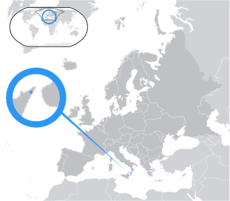 Location of the Most Serene Empire of Azzurria (light blue), in Europe (dark grey) | |
| Capital | Azzurria |
| Largest city | Pasqualia |
| Official languages | Italian |
| Demonym(s) | Azzurrian (English) Azzurriano (Italian) |
| Government | Elective constitutional monarchy, diarchy, one-party State |
• Emperors | Fabrizio I, Alessia I |
| Francesca Roma | |
• Governor | Pietro Baccio |
| Legislature | Light Blue Commission |
| Establishment | 20 September 2016 (as Tower City State) 27 October 2016 (actual) |
| Population | |
• 53 (Total, including non residents) census | 7 (Residents) |
| Currency | Azzurrian crown |
| Time zone | UTC+1 |
Founding member of the Society of Italophone Micronations, Society of Micronations and of the Micronational Union of Twin Towns, co-founder of the Azzurrian-Unironic Economic Pact | |
The Empire of Azzurria, officially the Most Serene Empire of Azzurria (Italian: Serenissimo Impero di Azzurria), was an autonomous territorial entity based in Italy, of which it was an enclave, and by which it was landlocked.
It claimed to be a sovereign state, but was more commonly referred to as a micronation by external observers.
What made this micronation particular, was that it consisted of territories that are owned by the current rulers of the Micronation, with even an own permanent population.
The Most Serene Empire of Azzurria was the founding member of the Society of Italophone Micronations, Society of Micronations and of the Micronational Union of Twin Towns, co-founder of the Azzurrian-Unironic Economic Pact and claimed a tacit recognition from Malaysia and from Spain, after that its official Twitter account had been followed by official people and Offices attributable to them.
Etymology
The Most Serene Empire of Azzurria took the name from its capital, Azzurria, which took its name from one of the national colors, the light blue (azzurro, in Italian).
History

The Most Serene Empire of Azzurria claimed independence from Italy on 20 September 2016, as Tower City State.
First achievements in matter of foreign affairs and diplomacy arrived five days after the declaration of independence, on 25 September 2016, when it joined the Union Against Micronational War and formalised its two first mutual recognitions and diplomatic affairs, with the Kingdom of Imvrassia and the Empire of Karnia-Ruthenia.
On 27 October 2016. the Tower City State became an Empire, with the denominaton of Most Serene Empire of Azzurria.
As Tower City State
Enikő I abdication crisis
On the late evening of 5 October 2016, the State Captain Enikő I confessed to the other State Captain, Fabrizio I, her will to abdicate and even break their romantic relationship, for private reasons.
The next day, on 6 October, Fabrizio I called for a joint meeting together with the Light Blue Commission and the Governorship, for discuss about this abdication crisis.
On media declarations, the Secretary of State Francesca Roma stated that the decision was not official, but still everything was possible, comprising abdication of Fabrizio I too, and that the eventual decision to officialise the Sede Vacante was postponed on the evening of the same day.
However, at 20:00 (local time), Enikő I returned on her decision and revoked her abdication.
First referendum about national flag and coat of arms


On 13 October 2016, the Secretary of State Francesca Roma announced that a referendum has been scheduled for the next day, 14 October 2016, concerning the opinion of the population about the national flag and coat of arms, including alternatives.
The referendum has been scheduled starting at 10:00 AM local time, with closure time at 04:00 PM local time.
Citizens voted sending an email through the contact section of the official website, including the preference and the image of the passport of the voting citizen.
On 14 October 2016, twenty-nine of the thirty citizens having electoral rights voted for the referendum; four people voted for keep the national symbols while all the other twenty-five voted for the proposal #2 that, with immediate effect, replaced the old symbols.
Resignation of the Secretary of Foreign Affairs
On the late evening of 15 October 2016, the Secretary of Foreign Affairs of the Tower City State, Giuseppe Brosco, has irrevocably resigned from his office,[1] with effect from 23:59 of 16 October 2016, because of the incompatibility between the institutional position covered by him in the Tower City State and the job, just obtained by him, in a company located in Como (Italy).
After public thanks from Giuseppe Brosco, displayed on a news message on the official website, the State Captains added that his successor, with effect from 17 October 2016, will be Mr. Vittorio Fiore, a citizen of the Tower City State, born in Italy.
National flag set on fire

On 21 October 2016, at 13:01 (local time), the Tower City State announced that few minutes before was set on fire, by unknowns, the national flag displayed outside the Royal Palace.
It was left a document, in which was required a new referendum about the national flag and coat of arms, restoring the blue as the national color along with white, in place of yellow. The authors of the act added that they wanted to wait until the midnight, and that was ready to extraordinary measures if their request was not heeded.
After about a quarter hour, the Corps of Gendarmerie announced that they arrested Deborah Liotti, Secretary of Employment and Citizenship, and Samantha Dollena, Secretary of Heritage and Tourism.
The State Captain Fabrizio I said that they have been removed, with immediate effect, from their governative positions and have withdrawn their citizenships.
He also added that, together with the Yellow Commission, proposed another referendum on the flag and the national coat of arms, to prevent the repeating of these actions.
Second referendum about national flag and coat of arms

On 21 October 2016, Fabrizio I, State Captain of the Tower City State announced that a referendum has been scheduled for the same day, concerning the opinion of the population about the national flag and coat of arms, including alternatives.
The referendum has been scheduled starting at 15:30 local time, with closure time at 16:30 local time.
Citizens voted sending an email through the contact section of the official website, including the preference and the image of the passport of the voting citizen.
On 21 October 2016, twenty-nine of the thirty-one citizens having electoral rights voted for the referendum; three people voted for keep the national symbols, four people voted for the second proposal and twenty-two voted for the first proposal that, with immediate effect, replaced the old symbols and the Yellow Commission has been renominated as Light Blue Commission.
Creation of the title "Eternal Captain of State"

On 22 October 2016 the Tower City State announced that the draft law prepared by the State Captain Fabrizio I was accepted by the Light Blue Commission in the same day.
The law establishes the title of Eternal Captain, to be assigned to the memory of Pasquale I, loved maternal uncle of Fabrizio I and also national patron, passed away last December.
He becomes de jure the head of State of the Tower City State, although in fact the State Captains remain joint heads of State de facto.
Basically the Tower City State becomes the only one Country in the world, together with North Korea, that is ruled de jure by a deceased person (this is called necrocracy).
Nevertheless, as mentioned above, the State remains an elective constitutional monarchy under diarchy between the two State Captains of opposite sex gender, that continue to perform their duties of heads of State as before.
The title of Eternal Captain is therefore purely honorific, although legally valid.
However, after the transformation of the Tower City State into an Empire, this title has been abolished.
Transition from Tower City State to Most Serene Empire of Azzurria

On 26 October 2016, the Light Blue Commission, the Governorship, the judges and Fabrizio I and Enikő I started a joint meeting with the purpose to transformation of the State into an Empire, with the annexation of another territory owned by the current leaders.
On 27 October 2016, after one day, the State publicly communicated that the transition has been completed, and updated all its websites, changing also the national symbols and the denomination, becoming the "Most Serene Empire of Azzurria" (Italian: Serenissimo Impero di Azzurria).
The State Captains became the Emperor and Empress of the Most Serene Empire of Azzurria.
As Most Serene Empire of Azzurria
Expansion of the national territory

In the same day of the transformation into an Empire, the Most Serene Empire of Azzurria annexed the city of Pasqualia, located in the same Italian city of the previous only one territory of Azzurria, Messina (Italy).
With the annexation of Pasqualia, the national territory's size increased to 0,00129594 km2.
Annexation of Balilla and San Pietropoli
On 10 November 2016, the Most Serene Empire of Azzurria annexed the cities of Balilla and San Pietropoli, located in the Italian city of Messina.
With these new annexations, the national territory's size increased to 0,00166795 km2.
Introduction of the first, own, national currency
On 15 November 2016, the Most Serene Empire of Azzurria introduced the Azzurrian crown, as its new official national currency, replacing the Italian Lira.
It comprises six banknotes and no coins, and has been unilaterally pegged 1:1 to Euro; the money change service is possible at the Royal Palace or at every foreign embassy.
The first six banknotes printed are exposed in the Numismatic collection of Fabrizio I.
Abdication of Enikő I

On 14 December 2016, through a communicate on the national website, the Most Serene Empire of Azzurria announced that, on the late evening of the previous day, Enikő I did successfully abdicated from her throne.
The Emperor, Fabrizio I, declared the Sede Vacante status for her empty position, and nominated the Secretary of State Francesca Roma as regent of the Empress throne, until a Conclave will be held.
2017 Conclave
On 3 January 2017 the Most Serene Empire of Azzurria announced, through its official website, the indiction of a Conclave for the election of the new Empress, to be held on 10 January 2017, with further daily other sessions if the first one should not be successful.
At 12:15 of 10 January 2017, the first day of Conclave has ended, after 2:15 hours; the result has been null, so the Conclave has been prorogated with a new session to be held on the next day, 11 January 2017, with the same beginning time.
The second day of Conclave has been longer, ending at 15:09 local time, and still without a successful election of the new Empress; a new session has been announced to be held on the next day, 12 January 2017, with the same beginning time.
On 12 January, the third session of Conclave began at 10:00 local time; after just fifty-two minutes it has been closed, and the news of the successful election of the new Empress has been released through the official website and Twitter page of the Most Serene Empire of Azzurria.
The new Empress of the Most Serene Empire of Azzurria has been introduced to the population and to the foreign States through a press release on the official website; she took the regnant name of Saloua I.
Fall of the nation
The Micronation passed through 1 year and 10 months of inactivity, until being officially unestablished on 12 November 2018.
Geography
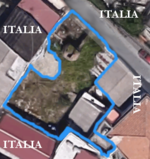
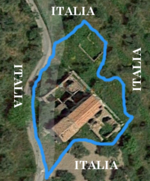
The territory, with its total area of 0,00166795 km2 (17953.66 ft2), was an enclave of the Italian island Sicily, the biggest island on the Mediterranean Sea.
The national territory was flat, except for the area in which was located the old tower, which was situated at a higher height than the rest of the territory.
The tower, with its 20 meters, was the highest point of the territory.
Plants and green cover approximately the 90% of the territory, making the Most Serene Empire of Azzurria one of the greenest Micronation in the world.
Climate
The Most Serene Empire of Azzurria was part of the climate area CSA, a warm climate and very dry summers and mild and rainy in the winter semester. Also called Mediterranean climate, with temperature changes significantly contained in any season.
The winter, rather short, presents rare cold episodes in sparse cases it could even bring snow. The last snowy episode, occurred on 31 December 2014, preceded the event of the winter 1999.
Summer was moderately hot and not particularly humid. In fact, the average value of moisture tend to be lower during the hottest hours of the day.
Moreover, the presence of frequent sea breezes tend to contain the highest temperature values; only in the presence of southern winds (during the main heat waves) you can reach 40 °C, but in these cases the rates of humidity become very low falling below 20%.
Rainfall was significant and in fact the average annual of rainfall is 846.9 mm, mainly concentrated in autumn and winter, but in summer there were also opportunities for short thunderstorms.
| Climate data for the Most Serene Empire of Azzurria | |||||||||||||
|---|---|---|---|---|---|---|---|---|---|---|---|---|---|
| Month | Jan | Feb | Mar | Apr | May | Jun | Jul | Aug | Sep | Oct | Nov | Dec | Year |
| Average high °C (°F) | 14.4 (57.9) |
14.7 (58.5) |
16.1 (61) |
18.3 (64.9) |
22.5 (72.5) |
26.8 (80.2) |
30.0 (86) |
30.5 (86.9) |
27.5 (81.5) |
23.2 (73.8) |
18.8 (65.8) |
15.8 (60.4) |
21.6 (70.9) |
| Average low °C (°F) | 10.1 (50.2) |
9.8 (49.6) |
10.9 (51.6) |
12.5 (54.5) |
16.4 (61.5) |
20.4 (68.7) |
23.4 (74.1) |
24.2 (75.6) |
21.5 (70.7) |
17.8 (64) |
14.1 (57.4) |
11.6 (52.9) |
16.1 (61) |
| Average Precipitation mm (inches) | 102.9 (4.051) |
100.2 (3.945) |
83.4 (3.283) |
68.3 (2.689) |
33.8 (1.331) |
12.7 (0.5) |
20.0 (0.787) |
25.6 (1.008) |
63.9 (2.516) |
113.7 (4.476) |
119.5 (4.705) |
102.9 (4.051) |
845.9 (33.303) |
| Source: Wikipedia | |||||||||||||
Economy

The economy of the Most Serene Empire of Azzurria was managed by the Secretary of Finance and Economic Development.
In the Most Serene Empire of Azzurria, according to the Constitution, all the members of the public administration did not get a salary.
The economy was based almost exclusively on the offerings of the population (there were no taxes on the population, they were free to donate what they want) and the existing assets, including the consistent donations from the Royal Family that helped the State to cover every cost of the public administration.
Since the national economy was characterized by the absence of direct taxes and the presence of a confidential banking secrecy, this made the Most Serene Empire of Azzurria a kind of "tax haven."
The Azzurrian crown was the national currency, having been adopted on 15 November 2016. It had replaced the Empire's previous currency, the Italian Lira, and it was unofficially pegged 1:1 to Euro.
State-owned Enterprises


The Most Serene Empire of Azzurria had three State-owned enterprises, respectively the Postal Service of the Most Serene Empire of Azzurria, the Administration of the Patrimony of the Most Serene Empire of Azzurria and the Azzurrian Polygraphic Institute.
It is planned for a next future the foundation of other two State-owned enterprises, namely a national television and a national newspaper.
Transports
In the Most Serene Empire of Azzurria, there were no highways, railways, seaports and airports, because the territory's little size.
According to the Constitution of the Most Serene Empire of Azzurria, citizens were not allowed to possess (and/or drive) every kind of vehicle inside the national territory, due to the uselessness of a vehicle.
This law made the Most Serene Empire of Azzurria the first State in the world with a totally absent impact concerning the CO2 emissions.
The only access to the national territory was from the Italian city of Messina, which could be reached easily through the international airport of Catania.
Politics
| Most Serene Empire of Azzurria |
 This article is part of the series: |
|
|
|
Government basis
Executive
Legislative
Government Policy
Elections and Referendums
|
The Governorship of the Most Serene Empire of Azzurria was the body which exercised the executive power in the Most Serene Empire of Azzurria,[2] while the Light Blue Commission of the Most Serene Empire of Azzurria exercised the legislative power[3] and the judiciary power was exercised by the judiciary system.
Citizens that are members of the Nationalist Party of the Most Serene Empire of Azzurria can apply on the official website for be a new member of the Light Blue Commission, if there are vacancies; the minimum age for one to be a candidate was 18 years old.
The Secretary of State was appointed directly from the Emperors.
The Supreme Court of the Most Serene Empire of Azzurria was the highest judicial authority in the Most Serene Empire of Azzurria.
The Emperors were together leaders of the Nationalist Party of the Most Serene Empire of Azzurria.
Political Parties
Within the Most Serene Empire of Azzurria, there was only one political party, the Nationalist Party of the Most Serene Empire of Azzurria.[4]
| Party Name | Emblem | Short Name | Leader(s) | Position | Colours | Seats in the Light Blue Commission |
|---|---|---|---|---|---|---|
| Partito Nazionalista del Serenissimo Impero di Azzurria (IT) Nationalist Party of the Most Serene Empire of Azzurria (EN) |
 |
PNSIA (IT) NPMSEA (EN) |
Fabrizio I, Emperor of Azzurria | Nationalist | Light blue and white | 13 / 13
|
Secretaries of the Most Serene Empire of Azzurria
The Secretaries of the Most Serene Empire of Azzurria are the equivalent of Ministers, in charge of their homonym Offices.
They are eleven, plus the Secretary of State, that is the equivalent of a Prime Minister, and its Deputy.
The Secretary of State is appointed directly by the Emperors and has the main duty of coordinate the other Secretaries, and being the spokesman for the Nationalist Party of the Most Serene Empire of Azzurria, while the Deputy Secretary of State has the main duty of substitute the Secretary of State in its duties when there are situations that require it (for example in foreign visits of State or in quality of spokesmen of the Nationalist Party).
Administrative divisions
The Most Serene Empire of Azzurria includes four cities, Azzurria, Balilla, Pasqualia and San Pietropoli.
| Emblem | Map | Name | Annexed | Population | Area | Mayor | Flagmap | |||||
|---|---|---|---|---|---|---|---|---|---|---|---|---|
| Cities of the Most Serene Empire of Azzurria | ||||||||||||

|

|
Azzurria | 20 September 2016 | 6 in winter 1-3 in summer |
0,0003112 km2 | Nicola Fontana | 
| |||||
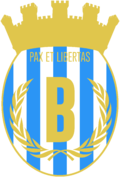
|
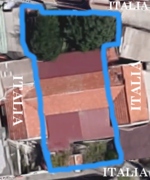
|
Balilla | 10 November 2016 | 1 | 0,00025839 km2 | Nino Trento | 
| |||||
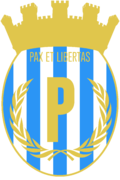
|

|
Pasqualia | 27 October 2016 | 0 in winter 2 in summer |
0,00098474 km2 | Federica Lanchi | 
| |||||
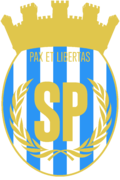
|
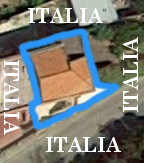
|
San Pietropoli | 10 November 2016 | 0 in winter 8 in summer |
0,00011362 km2 | Rosa Trento | 
| |||||
Demographics
Languages

Inside the Most Serene Empire of Azzurria, Italian has the status of national language.
English is the most known foreign language, used especially along the national language in foreign affairs, but it has not status of official language.
Being a multicultural population, coming from various Countries of the world, the population of the Most Serene Empire of Azzurria has also other unofficial languages spoken in their native Countries, like Arab, as being the mother language together (with Italian) of the Secretary of Sport of the Most Serene Empire of Azzurria Jasmine Hossain.
Population

The Most Serene Empire of Azzurria has an overall population of fifty-three persons (January 2017 census).
Actually, the population of the Most Serene Empire of Azzurria is composed by people that comes from several Countries, among which for example Italy.
| Kind of citizen | Total number of citizens | Number of citizens residents | Electoral rights |
|---|---|---|---|
| Cats | 1 | 0 | |
| Dogs | 1 | 1 | |
| Humans | 51 | 6 |
The permanent population of the Most Serene Empire of Azzurria is composed by seven persons, including Emperor Fabrizio I, his dog and his family. The remaining of the population lives outside the national borders but sometimes they visit the Empire, especially the members of the public administration that come to perform their duties.
Citizenship

According to article 31 of the Constitution of the Most Serene Empire of Azzurria, the citizenship is granted to:
- A son/daughter of a father/mother with citizenship of the Most Serene Empire of Azzurria, who was born inside the national territory;
- A son/daughter of a father/mother with citizenship of the Most Serene Empire of Azzurria, who was born outside the national territory;
- Everyone that has received it by an Act of the Light Blue Commission or a Royal Decree;
- Everyone that has applied for the citizenship from the official website, and has received a positive answer.
In the Most Serene Empire of Azzurria, the citizenship is assigned to people by the Citizenship Office in the various foreign embassies of the Most Serene Empire of Azzurria and at the Royal Palace inside the national territory.
Currently it provides citizens of an identity card, in .png image file, upon request for a fee of 2000 Italian Lira (approximately €1). Citizens can print it and use as personal document, only inside the national territory and inside the foreign embassies.
For can receive the citizenship of the Most Serene Empire of Azzurria is necessary to apply through the official website, and the Citizenship Office will take care of the request.
People that receive the citizenship can also apply (or the Govern can also ask/require) for the establishment of a new Embassy in their native Country, if they match the following requirements:
- To join the Citizenship Office and take care of the citizenship requests from people located in the Country of their Embassy;
- To take care of the duties of the Embassy;
- To respect the laws of the Most Serene Empire of Azzurria;
- To exhibit the national flag of the Most Serene Empire of Azzurria inside and/or outside the Embassy.
National Corps
The Most Serene Empire of Azzurria has three national corps[5] and, mostly important, does not have a national army.
According to Article 2, point 3, of its Constitution, the Most Serene Empire of Azzurria rejects war as an instrument of aggression against the freedom of other peoples and as a means of settling international disputes; the Most Serene Empire of Azzurria promotes and encourages international organizations addressed to peace and justice between world nations.
The Most Serene Empire of Azzurria, according to its Constitution, can declare war to another State only for defensive purposes.
| Logo | Name | Foundation | Tasks |
|---|---|---|---|
| Corps of Customs of the Most Serene Empire of Azzurria | 20 September 2016 | Custom Office national service | |
| Corps of Emergency of the Most Serene Empire of Azzurria | 20 September 2016 | Firefighting, medical and emergency national service | |
| Corps of Gendarmerie of the Most Serene Empire of Azzurria | 20 September 2016 | Borders protection, police corp and Royal Family protection |
National Currency

Within the Most Serene Empire of Azzurria, the national currency is the Azzurrian crown, valid only inside the national borders and inside the foreign embassies of the Most Serene Empire of Azzurria. Every use outside these places is strictly forbidden.
It has not any sort of subunit, and it is based entirely on banknotes.
The Azzurrian Crown is unilaterally pegged 1:1 to Euro, and is also used for the postal service (stamps) inside the Most Serene Empire of Azzurria and its foreign embassies.
Culture
Cuisine


The cuisine of the Most Serene Empire of Azzurria is mostly a mix of specialties from Italy.
Dishes are mainly based on fish and seafood: swordfish, mussels and tuna. About meat, chops are the most popular. Traditional sweets are: pignolata, black and white and the ricotta's cannoli (with chocolate variant). Typical is also the Messina's focaccia (curly endive, desalted anchovies, black pepper and tuma cheese), rustics (arancini, pidoni, mozzarella in carriage), a lot of kind of pasta (spaghetti with clams, with mussels, lasagne, ecc...) and granita, in various tastes (strawberry, lemon, almond, mulberry, chocolate, pistachio, with cream) accompanied by the famous brioche, very different from other brioches in form and flavor.
Public Holidays

The Most Serene Empire of Azzurria celebrates nine national days and thirteen commemoration days.
All the public holidays are officially defined by a Decree from the Emperors, and employers are encouraged to offer leave from work to their employees.
Although the Most Serene Empire of Azzurria does not have a national religion, it included Christmas in the list of national days, due to the fact that the biggest part of its population celebrates it. It is assumed that holidays of other religions will be adopted in a similar way should a sizeable proportion of the population become adherents of that particular religion.
Media

Residents of the Most Serene Empire of Azzurria read Italian newspapers imported from Italy and watch Italian and satellite television channels (which can be seen at the Royal Palace).
Museums

The Numismatic collection of Fabrizio I, also simply known as Numismatic Collection, is the national and unique collection (kinda of museum) of the Most Serene Empire of Azzurria.
It includes banknotes, coins and tokens from all around the world.
It is property of Emperor Fabrizio I, and it is located inside the Royal Palace.
Religion

According to Article 20 of its Constitution, the Most Serene Empire of Azzurria enjoys full religious freedom, allowing its citizens to adhere to any kind of faith, among which there are also Christianity, Islam, Hinduism, and Taoism.
Every citizen is free to choose, change and/or practice a religion, faith or belief without persecution, either on their own or with others, and to have marriage with anybody, regardless of different religious beliefs.
The crimes of religious discrimination are heavily punished by the Penal Code, with penalties ranging from a simple fine up to years of home detention.
Mostly of the population professes the Roman Catholic branch of the Christian religion, followed by Islam.
Sport
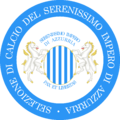
Inside the Most Serene Empire of Azzurria, the national sport is the association football (soccer).
Other popular sports between the population are athletic, gymnastic, volleyball and computer games.
The Most Serene Empire of Azzurria has also a national football team,[6] that represents the Micronation around the world.
There is not still a national sportive championship, but is planned to improve national championships for some sports, like for soccer and volleyball, in the future (to be played outside the national territory).
It is not a member of the FIFA and of the UEFA, but however it plays unofficial friendly football matches with some amateur teams, around the world.
On 28 September 2016 the Football Federation of the Most Serene Empire of Azzurria (being still the Tower City State) contacted the CONIFA, trying to apply for became a new member, but received a negative answer.
The Emperor Fabrizio I, being a good football player, joined the representative team as coach and player, and he is the first head of State to do so.
Foreign Relations

The Most Serene Empire of Azzurria establishes and maintains diplomatic relations with other nations through the Secretary of Foreign Affairs.
The Secretary has the power to grant "states of friendship" and tacit recognition, but official recognition of another nation can only be granted by an Act of the Light Blue Commission or a Royal Decree. In rare case, it can be granted also by a referendum (for example in case of disputes between two or more Nations/Micronations for the same territory or parts of it).
However, the Secretary of Foreign Affairs has the power to ratify treaties of mutual recognition and diplomatic affairs, only after had received the authorization from the Emperors with a Royal Decree.
The Most Serene Empire of Azzurria has, since its independence, diplomatic relations mainly through the MicroWiki Community, but also holds friendly relations with other States found around the web.
The Most Serene Empire of Azzurria actually keeps mutual recognition and diplomatic relations with thirteen Micronations, opened twenty-one foreign embassies (updated to January 2017), and is the founding member of the Society of Italophone Micronations, of the Society of Micronations, of the Micronational Union of Twin Towns and co-founder of the Azzurrian-Unironic Economic Pact.
The Most Serene Empire of Azzurria claims a tacit recognition from Malaysia and from Spain, after that its official Twitter account has been followed by official people and Offices attributable to them.
The Emperors, being also the leaders of the Nationalist Party of the Most Serene Empire of Azzurria, have the power to grant honorary citizenships and honorary titles to other heads of State and/or other notable persons.
The only one case of Sovereignty dispute is about the territory itself, disputed between the Most Serene Empire of Azzurria and Italy.
Classifications
These are the classifications for the Most Serene Empire of Azzurria:
- Billbrough-Miles: Level 3
- Boodlesmythe: Statehood
- Boodlesmythe-Tallini: Bricks and Mortar, Sizeable, Statehood — 5th World
- Dan's System: 5th World
- David's Micronational Potential Index: 5.0
- Dresner's System: 4.0
- Economic Potential Index: 4.4
- Linden's Revised System of Classification: 4.6
- Matthew's Democracy System of classification: 3.5
- The Milic definition of statehood: Community
- Freayth's System of Micronational Classification: 24
- Stùrd's Liberal System of Micronational Classification: 3.6
- Tallini: 5th World
- Usian Bureaucratic Scale: 3.0
Curiosities

- The Most Serene Empire of Azzurria does not have a cemetery (or however tombs), because its little area, but is bordering with an Italian cemetery.
- Cigarettes and drugs are forbidden inside the national territory; if someone is caught in its possession risks a big fee that can reach even €500 (about 1.000.000 Italian Lira).
- Every member of the Govern does not get a salary for his duty:
- In case of a defensive war, the Corps of Gendarmerie of the Most Serene Empire of Azzurria will protect the national territory.
- Fabrizio I, Emperor of the Most Serene Empire of Azzurria, is the drawer of several Micronations' Countryballs.
External links
References
- ↑ "Official website of the Tower City State"statodellacittadellatorre.wordpress.com/2016/10/15/dimissioni-del-segretario-degli-affari-esteri-giuseppe-brosco/
- ↑ "Official website of the Most Serene Empire of Azzurria", serenissimoimperodiazzurria.wordpress.com/governatorato
- ↑ "Official website of the Most Serene Empire of Azzurria", serenissimoimperodiazzurria.wordpress.com/commissione-azzurra
- ↑ "Official website of the Most Serene Empire of Azzurria", serenissimoimperodiazzurria.wordpress.com/partito-nazionalista
- ↑ "Official website of the Most Serene Empire of Azzurria", serenissimoimperodiazzurria.wordpress.com/corpi-nazionali
- ↑ "Official website of the Most Serene Empire of Azzurria", serenissimoimperodiazzurria.wordpress.com/selezione-di-calcio
Available languages for this page:
English • Italian |

